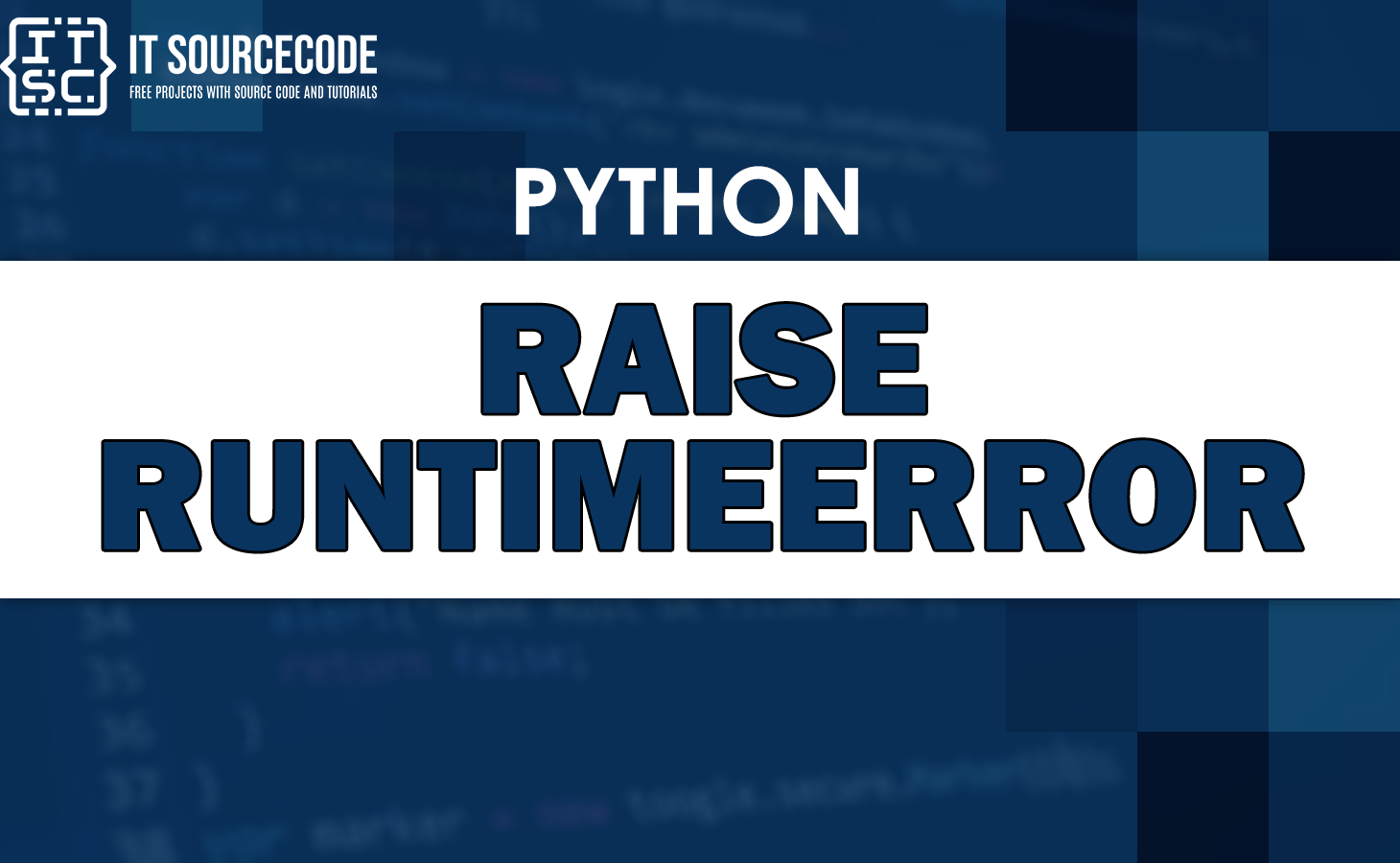In this article, we will discuss how to manage unexpected errors in Python using the ‘raise RuntimeError’ statement.
Also, we will learn how to identify and fix errors in your program and avoid runtime errors that can cause your program to fail to run.
The syntax for the raise statement is as follows:
raise [Exception [, args [, traceback]]]
In this syntax:
- “Exception” is the type of exception you want to raise.
- “Args” is an alternative argument that can be used to provide additional information about the exception.
- “Traceback” is also an alternative argument that can be used to provide a traceback object.
What is Python Raise RuntimeError?
The “RuntimeError” exception is a type of exception that can be raised when a runtime error occurs.
This exception is used to demonstrate a runtime error has occurred, but the explicit type of error is not known.
The syntax for raising a RuntimeError exception is the following below:
raise RuntimeError(“Error message”)
In this syntax, “Error message” is a string that defines the error that occurred.
Reasons for Raise Runtimeerror Python
Here are a few reasons for raise runtimeerror python. Some of the common reasons are the following:
- Division by zero
- Trying to access a file that does not exist
- Invalid input from the user
- Trying to call a method that does not exist
- Attempting to use a variable that has not been defined
- Memory issues, such as running out of memory
How to handle Python Raise RuntimeError?
There are two methods to handle Python Raise RuntimeError:
Method 1: Using try-except blocks
One method to handle a RuntimeError is to use a try-except block.
A try-except block is used to catch exceptions that will occur during the execution of a program.
Here is an example of how to use a try-except block to handle a ‘RuntimeError’ exception:
try:
x = int(input("Enter a number: "))
y = int(input("Enter another number: "))
result = x / y
print(result)
except RuntimeError as e:
print("An error occurred:", e)In this example, we are inquiring the user to enter two numbers and divide them. If the second number is zero, a ‘RuntimeError’ exception will be raised.
We use a try-except block to catch the exception and print an error message that illustrates what went wrong.
Common Mistakes When Using Raise RuntimeError
When using the ‘raise RuntimeError’ statement in Python, here are some common mistakes that developers cause.
These include the following:
- Raising the wrong type of exception
- Not including an error message
- Not handling the exception
Additional Resources
- Runtimeerror: cuda out of memory.
- Runtimeerror working outside of request context
- Runtimeerror: mat1 and mat2 must have the same dtype
- Runtimeerror: numpy is not available
Frequently Asked Questions (FAQs)
A runtime error in Python is an error that occurs during the execution of a program. It will occur if the program encounters unexpected action, causing the program to fail.
Yes, you can catch a runtime error in Python using try-except blocks. By using try-except blocks, you can handle the exception and provide an exquisite way for the program to exit if an error occurs.
The ‘raise RuntimeError’ statement in Python is used to raise an exception when a runtime error occurs.
By raising an exception, you are indicating to the Python interpreter that something unexpected has happened, and the program cannot continue executing.
Conclusion
In this article, we have discussed the ‘raise RuntimeError’ statement in Python, which is used to handle unexpected errors in your code.
Also, we have discussed common mistakes that developers make when using this statement, and how to handle runtime errors in Python.

